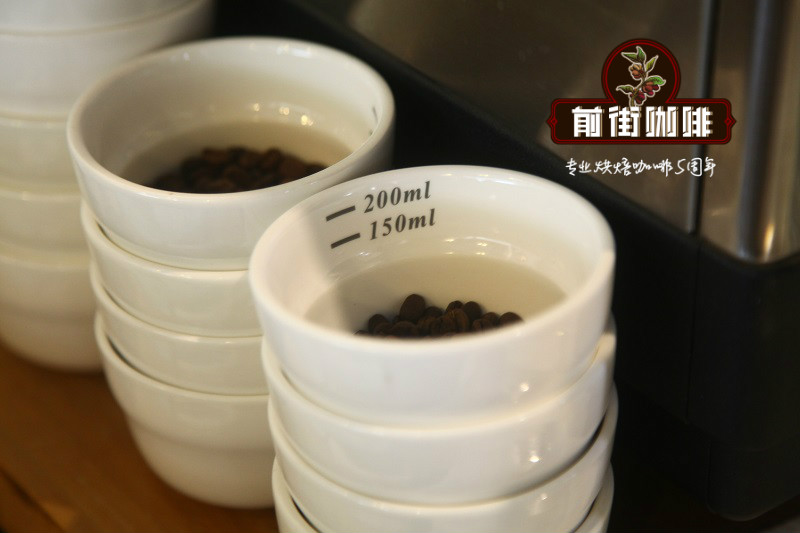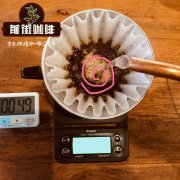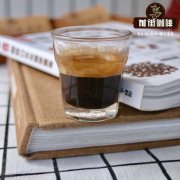Rain forest certified Copan producing area of Guatemala | Water-washed fermented cuckoo (bourbon, Kaddura, Kadu)

Professional coffee knowledge exchange more coffee bean information please follow the coffee workshop (Wechat official account cafe_style)
Rainforest certification Guatemala Koban production area | the flavor of water-washed fermented cuckoo (bourbon, Kaddura, Kaduai, Pache)?
The Koban Coffee producing area is located in the Alta Verapaz province of Guatemala, a non-volcanic area full of limestone and clay, with cool and humid environment. It is often shrouded in the famous "Chipi Chipi" (persistent drizzle). The mist moistens every inch of Koban, and the mist comes from the thick fog formed when the air of the humid tropical rain forest floats to the high altitude of Koban. It is the core of Mayan culture and the source of the largest tropical rainforest in Central America and Guatemala; mountains above 1600 meters above sea level. The contrast between high-altitude mountains and high-humidity tropical rain forests makes this area always surrounded by dense clouds falling to form mist. The name "Koban" comes from the Q'eqchi language "Cob'An", which means "foggy place".
Koban is also one of the few breeding grounds for Quetzal (scientific name: Pharomachrus and Euptilotis). It is the national bird of Guatemala and the currency name of Guatemala. If you visit Guatemala, you can see the long-tailed birds with bright and bright tails in Biotopo del Quetzal.
"Koban", a rain forest in central Guatemala, is surrounded by majestic peaks, with beautiful vegetation and flowers in full bloom. Guatemala is located in Central America, many volcanoes in the formation of mountains and plateaus, the production of high-quality Central American high-altitude very hard coffee beans, the world's ninth largest producer of coffee beans. There are seven major coffee producing areas in Guatemala, such as Antigua, Huehuetenango, Atitlan, Coban, Fraijanes, San Marcos and Acatenango. Coffee forest coffee selected by the variety of coffee for Caturra, Catuai, mainly picked by local women, and then peel and pulp grinding, but also more water-saving than the traditional washing method, this water is also recycled, more environment-friendly.
Guatemala has been growing coffee since around 1850. Before World War I, the Germans controlled as much as 80% of the country's production, most of which was exported to Germany. ANACAFE, the official coffee farmers' association, divided the country into eight regions according to region and flavor in the 1990s, and registered trademarks to promote the origin. These include Antigua, Acatenango, Huehuetenango and Atitl á n, where many award-winning farms are located. Common beans in Guatemala today include Typica, Bourbon, Caturra, Catua í, Pacas, Maragogype, Pacamara (a hybrid of the first two), Pache Comum (a local variety of Typica), and Gesha.
Treatment: washing, fermentation, sun drying and low temperature drying
Production area: section class
Treatment: washing fermentation / low temperature drying in the sun
Soil: limestone clay
Temperature: 15 Murray 20 degrees
Altitude: 1300 Murray 1500m
Varieties: Borbon, Caturra, Catuai, Pache
Certification: rainforest certification
Cup test record:
The cup focuses on its sweetness, followed by orange tonality and comfortable acidity. A coffee with good balance, good alcohol thickness and some acidity. Very sweet caramel with floral aromas, pears, raisins and berries. The finish has BlackBerry aromas, with orange and chocolate flavors in tone. Clear aromas of fresh flowers, fruit and chocolate, with caramel sweetness, well-balanced mellow thickness and pleasant aromas.
Qianjie recommended cooking:
Filter cup: Hario V60
Water temperature: 90 degrees
Degree of grinding: small Fuji 3.5
Cooking methods: the ratio of water to powder is 1:15, 15g powder, the first injection of 25g water, 25 s steaming, the second injection to 120g water cut off, waiting for the powder bed water to half and then water injection, slow water injection until 225g water, extraction time about 2:00
Analysis: using three-stage brewing to clarify the flavor of the front, middle and back of the coffee. Because V60 has many ribs and the drainage speed is fast, it can prolong the extraction time when the water is cut off.
Important Notice :
前街咖啡 FrontStreet Coffee has moved to new addredd:
FrontStreet Coffee Address: 315,Donghua East Road,GuangZhou
Tel:020 38364473
- Prev

Columbia Radford Coffee beans how to get out of the Drum bag _ how steady the flow of coffee
Professional coffee knowledge exchange more coffee bean information please follow the coffee workshop (Wechat official account cafe_style) flavor description: meticulous sour fruit, fairy grass honey, sweet malt, drupe round and balanced taste small farmer producer Rodelfo Betancourt Rios's land is located in Cauca province, a village called Los Quingos in Caldono autonomous region, with a total farmland area of 12
- Next

Huila Huilan Timana Timana Micro-production area in Ulla Province, Colombia | small farmers produce Castillo,
Professional coffee knowledge exchange more coffee bean information please follow the coffee workshop (Wechat official account cafe_style) Huila Huilan Timana Timana micro-production area in Vula, Colombia | small farmers produce Castillo, bourbon and Kaddura flavors? Colombia is the third largest coffee producer in the world, and coffee is produced almost everywhere, but it has been overwhelmed by the southern region in recent years.
Related
- Detailed explanation of Jadeite planting Land in Panamanian Jadeite Manor introduction to the grading system of Jadeite competitive bidding, Red bid, Green bid and Rose Summer
- Story of Coffee planting in Brenka region of Costa Rica Stonehenge Manor anaerobic heavy honey treatment of flavor mouth
- What's on the barrel of Blue Mountain Coffee beans?
- Can American coffee also pull flowers? How to use hot American style to pull out a good-looking pattern?
- Can you make a cold extract with coffee beans? What is the right proportion for cold-extracted coffee formula?
- Indonesian PWN Gold Mandrine Coffee Origin Features Flavor How to Chong? Mandolin coffee is American.
- A brief introduction to the flavor characteristics of Brazilian yellow bourbon coffee beans
- What is the effect of different water quality on the flavor of cold-extracted coffee? What kind of water is best for brewing coffee?
- Why do you think of Rose Summer whenever you mention Panamanian coffee?
- Introduction to the characteristics of authentic blue mountain coffee bean producing areas? What is the CIB Coffee Authority in Jamaica?

